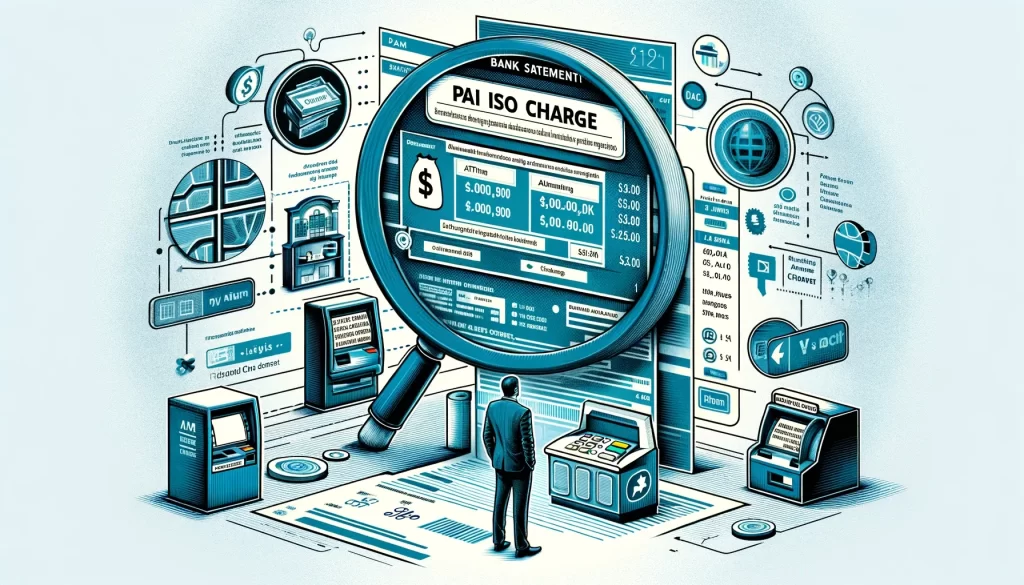Table of Contents
Have you ever glanced through your bank statement and stumbled upon a charge labeled “PAI ISO”? If so, you’re not alone. Many individuals find themselves puzzled by such entries on their bank statements. This post is dedicated to unraveling the mystery of the “PAI ISO charge” and explaining its significance in the banking world.
What is a “PAI ISO Charge”?
Defining PAI and ISO in Banking
“PAI” and “ISO” are acronyms commonly used in the financial sector. PAI stands for Payment Alliance International, a renowned leader in ATM portfolio management and payment processing solutions. ISO, on the other hand, refers to Independent Sales Organization, a term used for companies associated with credit card processing. They are not banks but are authorized to handle merchant accounts for businesses.
The Role of PAI ISO in Transactions
When a “PAI ISO charge” appears on your bank statement, it signifies that you’ve interacted with an ATM or a merchant that uses PAI’s processing services. These charges are often transaction fees, reflecting the cost of using an ATM not owned by your bank or a payment processed through a merchant using PAI’s services.

Understanding Bank Statements and Transaction Charges
Navigating Through Your Bank Statement
It’s crucial to regularly review your bank statement to understand various charges, including the “PAI ISO charge.” Bank statements provide a detailed record of your transactions, fees, and any interest earned or paid. Familiarizing yourself with the layout and terminology of your bank statement is key to managing your finances effectively.
Common Types of Bank Statement Charges
Bank statements can include various types of charges:
- ATM Fees: Charges for using ATMs outside your bank’s network.
- Account Maintenance Fees: Monthly charges for account management.
- Overdraft Fees: Fees incurred for overdrafts.
- PAI ISO Charges: As discussed, these are transaction fees linked to PAI’s processing services.
How to Handle a “PAI ISO Charge” on Your Statement
Verifying the Legitimacy of the Charge
If you encounter a “PAI ISO charge,” first verify its legitimacy. Recall your recent transactions to confirm whether you used an ATM or a service associated with PAI. If the charge doesn’t ring a bell, contact your bank for clarification.
Disputing Unrecognized Charges
In case you don’t recognize a “PAI ISO charge,” you have the right to dispute it. Contact your bank’s customer service to initiate the dispute process. They will guide you through the necessary steps to investigate and potentially reverse the charge.
Read also: Amazon Return After the Window Closed
Tips to Avoid Unnecessary “PAI ISO Charges”
Using Bank-Affiliated ATMs
To avoid “PAI ISO charges” from ATM usage, try to use ATMs affiliated with your bank. Most banks have a network of ATMs that don’t charge additional fees to their customers.
Understanding Merchant Payment Processes
When shopping, ask merchants about their payment processing partners. If they use PAI or another third-party processor, be mindful of potential additional charges on your transactions.
What is the difference between a pai iso charge and an atm fee?
| Feature | PAI ISO Charge | ATM Fee |
|---|---|---|
| Source | Payment Alliance International (PAI), an Independent Sales Organization (ISO) | Banks or ATM operators |
| When It Occurs | Incurred during ATM transactions or at merchants using PAI’s processing services | Incurred when using an ATM, especially outside your bank’s network |
| Nature of the Fee | Transaction fee covering the costs of processing transactions | Fee for using the ATM infrastructure and services |
| Scope of Transactions | To cover the costs of maintaining and operating the ATM and for the convenience provided | Strictly related to ATM withdrawals |
| Purpose | To cover costs associated with processing a transaction through PAI’s system | To cover the costs of maintaining and operating the ATM, and for the convenience provided |
| Varied or Specific | Broader, encompassing different types of transactions | Specific to ATM usage |
Final Words
Understanding the “PAI ISO charge” on your bank statement is crucial for effective financial management. By staying informed and vigilant about the charges on your bank statements, you can avoid unnecessary fees and ensure the security of your transactions.
By staying alert and informed about entries like “PAI ISO charge” on your bank statement, you can take charge of your financial health and avoid unexpected expenses. Remember, a well-informed bank customer is a financially secure one.
People Usually Ask
Can “PAI ISO charges” be refunded?
It depends on the bank’s policy and the nature of the charge. Contact your bank for specific information.
How often should I check my bank statement?
It’s advisable to review your bank statement monthly to keep track of all charges and transactions.
Are “PAI ISO charges” exclusive to certain banks?
No, these charges can appear on the statements of customers from various banks, depending on their ATM and merchant transaction habits.

